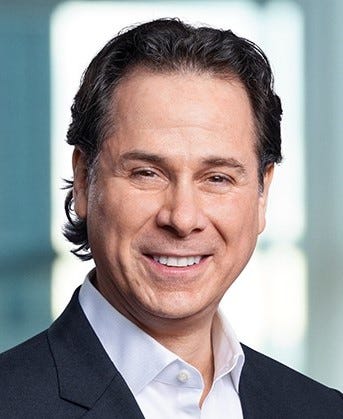A forum for contributed pieces from industry thought leaders, retailers, wholesalers and manufacturers. The views expressed are those of the authors.
C&S Wholesale Grocers is nothing like HaggenC&S Wholesale Grocers is nothing like Haggen
When it comes to their relevance to the Kroger, Albertsons merger — the two are entirely different companies in every important way
 Scott Moses is a partner and head of grocery, pharmacy, and restaurants investment banking at Solomon Partners, an M&A investment banking advisory firm. He writes a quarterly column for Supermarket News about sector trends, including operating, valuation, and strategic dynamics.
Scott Moses is a partner and head of grocery, pharmacy, and restaurants investment banking at Solomon Partners, an M&A investment banking advisory firm. He writes a quarterly column for Supermarket News about sector trends, including operating, valuation, and strategic dynamics.
The Kroger, Albertsons merger has understandably attracted a great deal of attention from politicians, unions, and other constituents. This has led to a long series of talking points (in often one-sided “listening sessions”) and other public pronouncements, many of which are demonstrably false.
One of the plainly untrue assertions being made is about C&S Wholesale Grocers, which has agreed to acquire 413 stores in areas where Kroger and Albertsons significantly overlap. Some people have said that C&S is similar to Haggen, which failed abysmally when it acquired stores divested from the Albertsons, Safeway merger in 2015. The two are entirely different companies in every important way.
I advised Haggen on its sale to the private equity firm that used it to make this acquisition and then again on the sales conducted after it failed. I therefore know these facts intimately.
Haggen is a small, 18-store supermarket grocer in Northwest Washington state and was nearly bankrupt when it was acquired by a private equity firm not long before it agreed, in 2014, to acquire 146 Albertsons and Safeway stores – a business eight times its size.
The vast majority of these stores were in Southern California, Arizona, and Nevada, over 1,000 miles away from where most anyone had ever heard of Haggen. This compounded Haggen’s challenges because they immediately converted each of the Albertsons- and Safeway-bannered stores to the unknown Haggen banner.
Haggen’s very small size and limited capital capacity made it very difficult for it to invest in better prices, sufficient marketing, or the team required to successfully compete. Customers were confused and sales declined precipitously.
C&S is a radically stronger buyer than Haggen in several critical ways. C&S is one of America’s largest grocery businesses and one of its largest private, family owned companies, with over 100 years of grocery experience. It has an estimated $30 billion revenue, retail stores in multiple regions of the U.S., and a robust wholesale operation that supplies over 7,500 stores across the country.
To maintain customer loyalty and continuity – a key area where Haggen clearly failed – C&S will be acquiring or licensing the banners of the divested stores, along with other key teammates and infrastructure. Unlike Haggen, C&S is very well capitalized to be able to invest in better prices, better wages, and store improvements. They have a deep management team and extensive experience successfully acquiring and integrating acquisitions.
C&S was actually validated by the FTC just two years ago as a divestiture buyer for stores that were sold out of the merger of Price Chopper and Tops in New York.
Perhaps most important, C&S is pro-union and will be assuming collective bargaining agreements. These stores easily could have been sold to a non-union operator, or to a plainly anti-union operator like Amazon, so this is a great outcome for unions.
In short, the C&S transaction clearly avoids Haggen’s mistakes and ensures that the divested stores will continue to serve customers, employ teammates, and offer communities another strong grocery competitor, amid the rising tide of national / discount grocers (Walmart, Target / Shipt, Costco, Amazon / Whole Foods, Aldi, and Dollar General) which now control well over 60% of the American grocery market.
People who suggest C&S and Haggen are even remotely similar either don’t know the facts or are actively ignoring them as they shamefully mislead people.
I readily concede that I am working with Albertsons on the merger (mainly to educate folks on the changes in our industry that I have been writing and speaking publicly about for many years), but that fact does not make any of these other facts any less true.
About the Author
You May Also Like





.webp?width=300&auto=webp&quality=80&disable=upscale)
